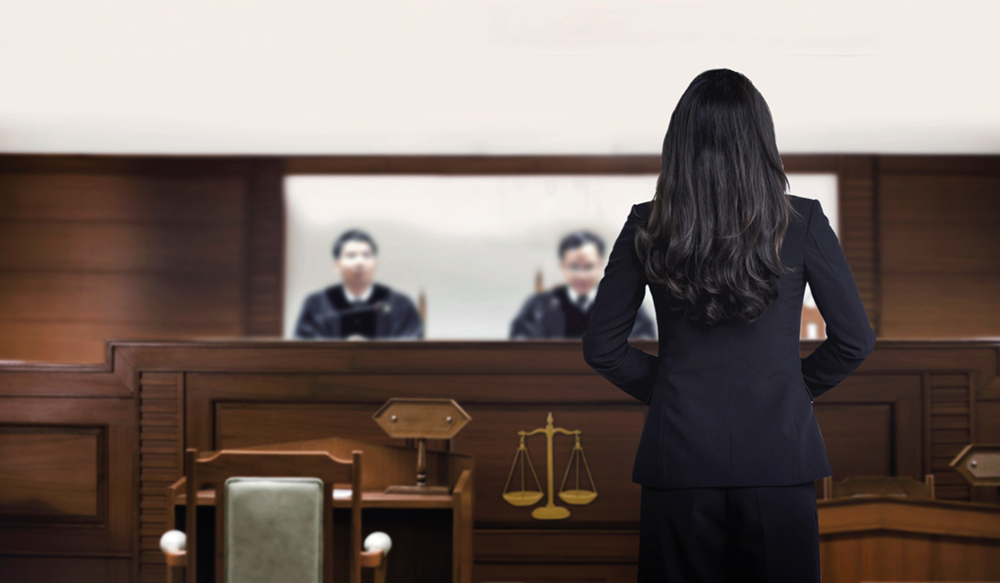Browsing the Complexities of Test Presentations: Tips for Seamless Delivery and Engaging Arguments
In the realm of legal proceedings, the art of trial presentation stands as an important component of success. The intricacies intrinsic in test presentations need a fragile equilibrium of ability, skill, and method.

Understanding Trial Goals
To properly navigate a trial, it is important to have a clear understanding of the purposes that require to be attained. Prior to entering the court, legal teams need to specify their objectives and wanted outcomes. These objectives serve as directing principles throughout the test, forming approaches and affecting decision-making procedures.
Recognizing test purposes entails a comprehensive analysis of the case, legal criteria, and the customer's finest rate of interests. Trial Presentations. It needs a careful exam of the realities, recognizing crucial problems, and expecting prospective difficulties. By setting measurable and specific objectives, lawyers can customize their discussions and debates to line up with the preferred results
Moreover, a clear grip of test goals enables legal groups to prioritize evidence, witnesses, and lawful disagreements successfully. It enables for the development of a systematic story that resonates with the court and court, strengthening the overall instance presentation.

Organizing Proof Efficiently
Having a clear understanding of trial objectives lays the foundation for arranging proof efficiently in legal process - Trial Presentations. By lining up the presentation of evidence with the wanted results of the trial, lawful teams can strengthen their debates and improve their persuasiveness. One important aspect of arranging evidence is categorization. Organizing evidence based upon styles or relevance to details lawful elements can aid enhance the presentation and make intricate info more absorbable for the judge or court.
An additional crucial element in arranging evidence properly is establishing a sensible flow. Offering evidence in a sequential and meaningful fashion can help develop a compelling narrative that sustains the legal debates being made. In addition, making use of aesthetic help such as timelines, charts, or charts can further enhance the organization of proof and assist in clarifying complicated partnerships or sequences of events.
Furthermore, making certain that all proof provided is permissible and pertinent to the situation is important. Unnecessary or inadmissible evidence can take away from the toughness of the debate and possibly damage the reputation of the offering event. A precise evaluation and selection process must be carried out to include only the most impactful and legitimately sound evidence in the test discussion.
Crafting Influential Stories
Crafting compelling stories plays an essential duty in offering persuasive debates during lawful proceedings. When creating a narrative for a test presentation, it is essential to develop a clear story that highlights essential factors and connects them in a coherent fashion. By weaving together proof, statement, and lawful disagreements right into a cohesive and persuasive story, legal professionals can effectively support for their clients and enhance the chance of a desirable outcome in the court.
Understanding Aesthetic Aids
Reliable use visual help is vital to enhancing the view publisher site influence and clarity of trial discussions. Visual help, when utilized tactically, have the power to streamline complex information, enhance bottom lines, and leave a lasting impact on the judge and court. To understand aesthetic help in trial discussions, it more tips here is critical to guarantee that they are clear, concise, and appropriate to the debates being made.
When including visual help, such as graphes, timelines, photographs, or graphs, into a trial discussion, it is necessary to maintain them aesthetically appealing yet professional. The visuals should match the verbal disagreements, supplying an aesthetic depiction of the information being talked about without overwhelming the audience with unnecessary details.
Additionally, practicing with the visual aids beforehand is necessary to make certain a smooth shipment during the trial. Acquainting oneself with the web content, changes, and timings of each aesthetic help can assist preserve the flow of the presentation and prevent technical problems that might emerge.
Delivering Impactful Closing Debates
An engaging closing debate offers as the culmination of a test presentation, encapsulating the core narrative and encouraging the judge and jury towards a beneficial decision. Begin by outlining the major arguments that support your customer's placement, emphasizing why the proof offered throughout the trial sustains your story.
In addition, including sob story can even more reinforce your closing argument. By linking and humanizing the instance on a personal degree with the decision-makers, you can stimulate empathy and understanding, affecting their perception of the truths presented. Furthermore, repeating the lawful standards that should be satisfied for a desirable judgment can strengthen the credibility of your setting. Eventually, a well-crafted closing debate should leave a long lasting impact, compelling the court and jury to rule in your client's favor.
Verdict
In final thought, understanding trial discussions involves understanding goals, organizing evidence, crafting stories, making use of aesthetic aids, and providing impactful closing disagreements. By executing these techniques properly, attorneys can present their instance perfectly and make engaging disagreements in the courtroom. It is essential to browse the intricacies of test presentations with precision and ability to accomplish success in lawful proceedings.
By aligning the discussion of evidence with the desired end results of the test, legal groups can reinforce their disagreements and enhance their persuasiveness (Trial Presentations). To master aesthetic aids in trial discussions, it is vital to guarantee that they are clear, succinct, and relevant to the disagreements being made
An engaging closing argument offers as the end result of a trial sites discussion, enveloping the core narrative and convincing the court and jury in the direction of a beneficial decision. Begin by laying out the primary debates that support your client's position, highlighting why the proof provided throughout the test supports your story.In final thought, mastering test presentations includes recognizing purposes, arranging evidence, crafting narratives, making use of visual help, and providing impactful closing arguments.